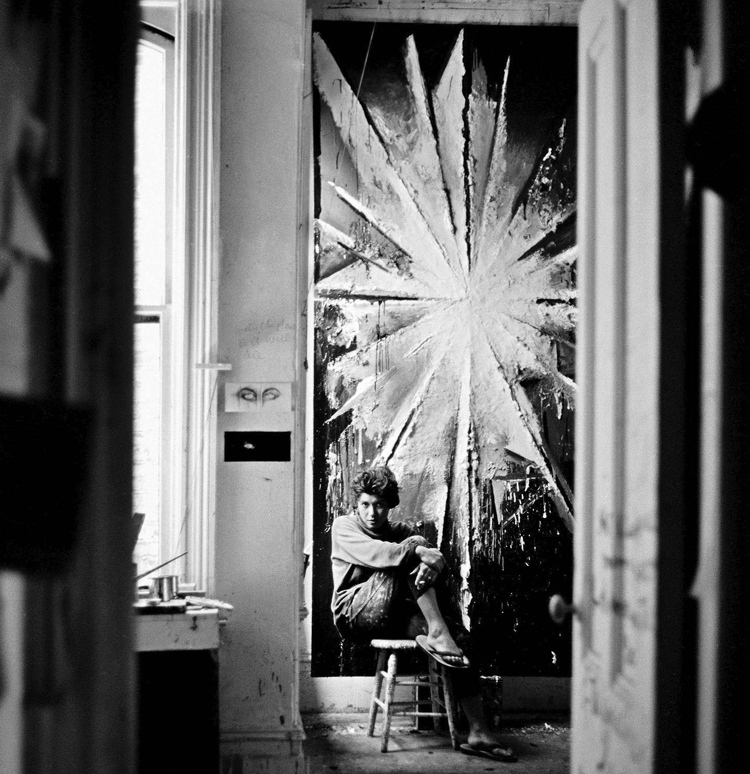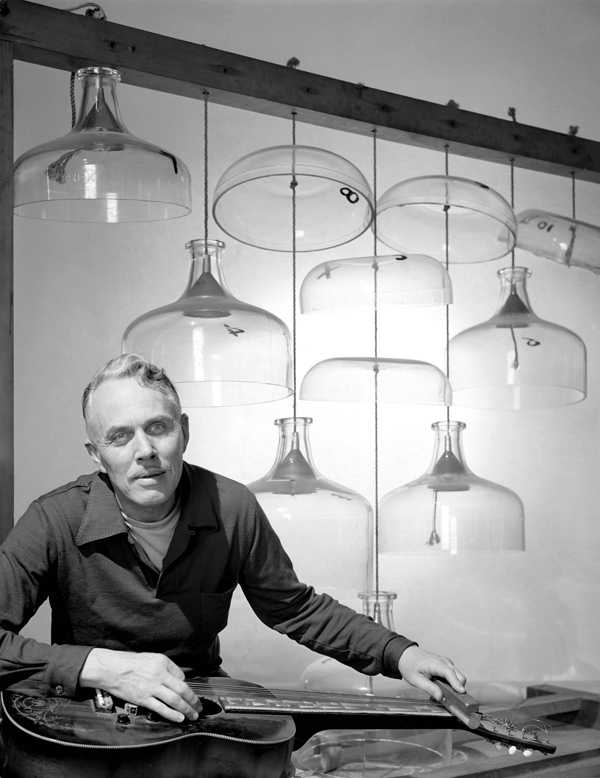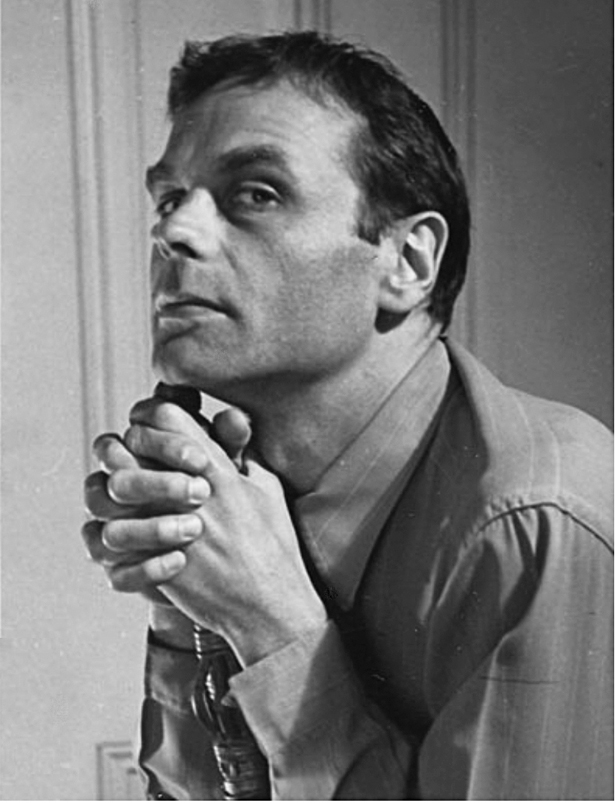Road to Bohemia - Page 3
 |
 |
 |
 |
|
|
Still, there was always something quotidian about bohemia, even for the artist Jay DeFeo, famous for her 2,300-pound 'painting' called 'The Rose.' This piece was as much sculpture as painting, so much so that when DeFeo and her husband, painter Wally Hedrick, were evicted from their Fillmore Street pad in 1964, they had to take down a wall to get it out of the building.
She recalled that building in an oral history as being "pretty funky, I'll tell you." It became a gathering spot for artists and writers, some living there, some passing through, including poet Michael McClure; artists Joan Brown and Sonia Gechtoff; and Jim Newman, director of the later-to-be legendary Dilexi gallery. Painter David Simpson lived upstairs.
"Every time Dave was building his stretcher bars, the dirt would filter down through the ceiling right over our bed. I'll never forget it," DeFeo recalls.
Bohemia, in the sense of an artistic scene, may not have been a real place. But there was a place that most bohemians were seeking—a place that is just outside the present reality.
In mid-century California, influenced by Asian thought and by Mexican and Central American art, many artists and writers got deeply into mysticism, Eastern religion, or even theosophy.
In Marin County, at the onset of the 1950s, the artists who called their movement Dynaton settled into a Mill Valley Victorian mansion owned by Wolfgang Paalen, a disinherited Austrian count whose late-Surrealist works were a means of moving beyond the world we see into the world that really is.
Painter Gordon Onslow Ford, a fellow Dynaton-er, wrote, "The inner worlds beyond dreams are invisible, but can be visible through spontaneous drawing and painting."
"The painter on his way to exploring the inner worlds is pursued by demons and is likely to paint them."
The example of Dynaton suggests another raison d'etre behind bohemian bonhomie. If you're part of a group, if you share a passion and a theory and a way of life, then what you're doing isn't just an individual action—it's a movement. It just might be—important.
"Paalen felt there was an intellectual climate in San Francisco where something could really happen," Dynaton painter Lee Mullican told oral historian Joann Phillips in 1976. "The war had ended. We were all enthusiastic that here was a place, that this scene would be a growing center of culture."
Many of the Bay Area's most famous mid-century bohemians didn't pursue the lifestyle entirely by free choice. Henry Miller, who arrived at Varda's Red Barn in 1944 looking for a place, any place, to stay, had only seven dollars to his name. And he was 52.
Sculptor and bon vivant Benny Bufano, who beat out Varda as San Francisco's most notorious bohemian, was, like Varda, consistently penniless, bartering his art for lodging, dental work, food.
And consider composer Harry Partch, inventor of a new musical notation to match new musical scales—and builder of an entire orchestra, with a 'chromelodeon,' 'diamond marimba,' and 'cloud-chamber bowls'—required to tow this stuff behind a rickety, old Studebaker that could barely top a steep hill.
Partch slept in his Studebaker, and inhabited an old herder's cottage on the Mendocino coast, because he could afford nothing else. The nearest place to buy coffee was 60 miles away, he complained—though he did enjoy challenges.
"I've been assured that I can live on seaweed, limpets, sea snails, madrone tips, and leached acorns, which abound in this country, virtually forever," he wrote of the Northern California coast just before an overland expedition. "I ain't afraid."




